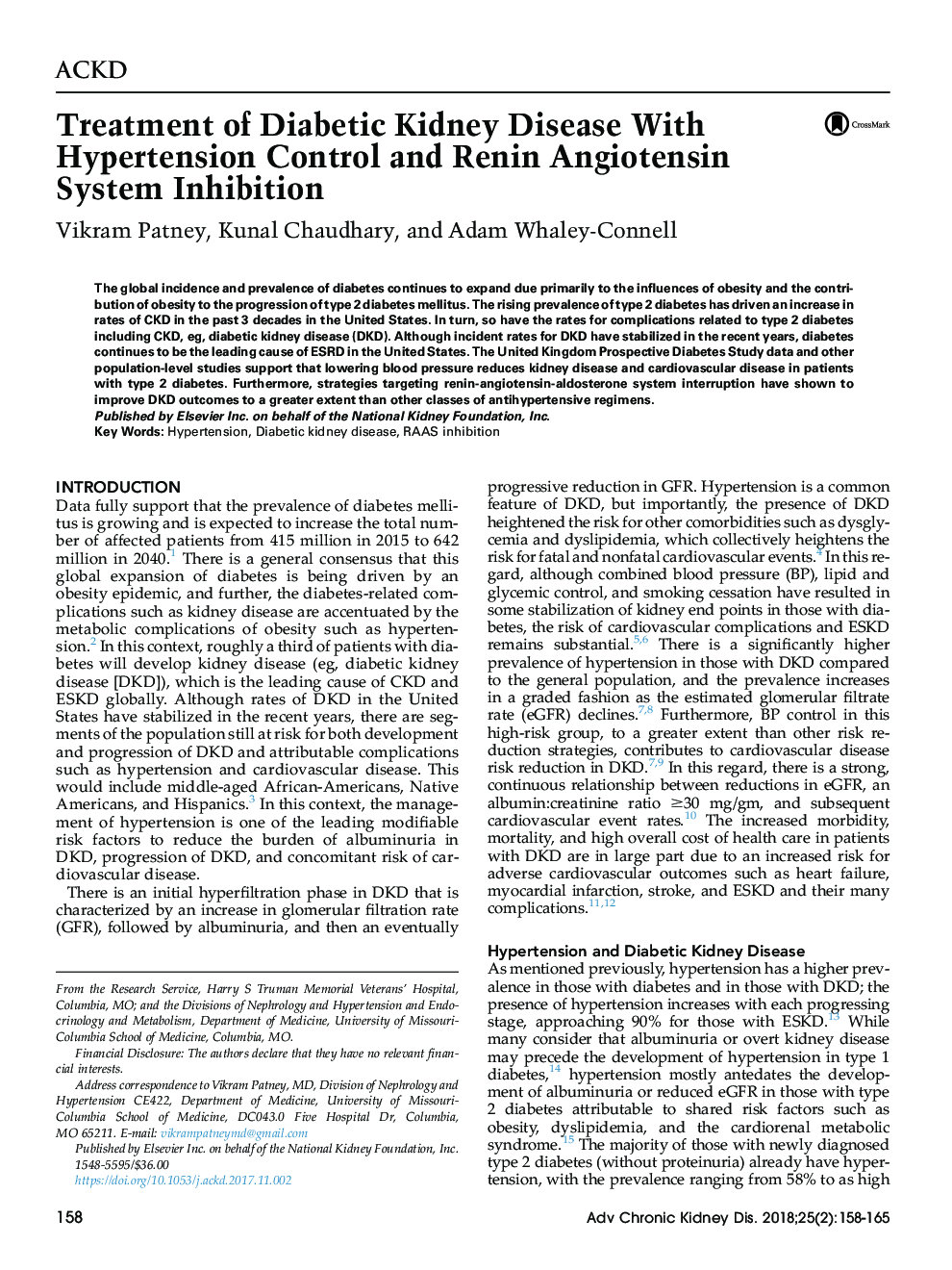| Article ID | Journal | Published Year | Pages | File Type |
|---|---|---|---|---|
| 8769612 | Advances in Chronic Kidney Disease | 2018 | 8 Pages |
Abstract
The global incidence and prevalence of diabetes continues to expand due primarily to the influences of obesity and the contribution of obesity to the progression of type 2 diabetes mellitus. The rising prevalence of type 2 diabetes has driven an increase in rates of CKD in the past 3 decades in the United States. In turn, so have the rates for complications related to type 2 diabetes including CKD, eg, diabetic kidney disease (DKD). Although incident rates for DKD have stabilized in the recent years, diabetes continues to be the leading cause of ESRD in the United States. The United Kingdom Prospective Diabetes Study data and other population-level studies support that lowering blood pressure reduces kidney disease and cardiovascular disease in patients with type 2 diabetes. Furthermore, strategies targeting renin-angiotensin-aldosterone system interruption have shown to improve DKD outcomes to a greater extent than other classes of antihypertensive regimens.
Keywords
Related Topics
Health Sciences
Medicine and Dentistry
Nephrology
Authors
Vikram Patney, Kunal Chaudhary, Adam Whaley-Connell,
